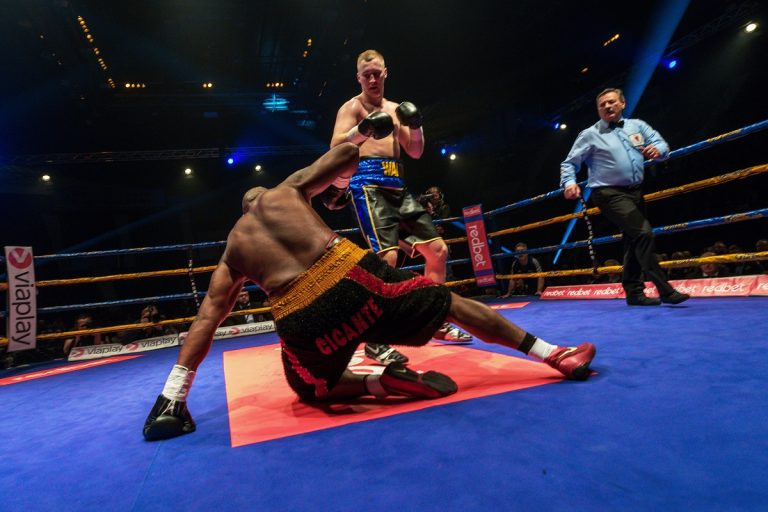Split Decisions In Boxing Explained (4 Famous Examples)
Judges are critical when it comes to any kind of combat sport matches, and boxing is no different. If there are no clear elements to the fight which decide the winner, such as K.O.s (knock outs) or disqualifications, judges are needed to decide who wins.
Through the entire fight, judges (usually three) watch carefully, scoring each round using criteria to mark both fighters’ performances. At the end of the match the points are tallied – whoever gained more points is the winner!
However, what if the judges disagree? What if their decisions in terms of point-giving differ? When two judges decide one fighter should win, and one judge decides the other fighter should win, you get a split decision.
Today we’ll discuss the factors that come together to give a split decision in boxing, and reveal the way in which a split decision is resolved. We’ll compare split decisions to other kinds of common decisions in boxing, and reveal 4 of the most exciting split decisions in boxing history.
What Is A Split Decision In Boxing?
In order to understand what a split decision is, we need to take a little look at the points system and judging rules of boxing matches.
Boxing Points System And Judging Rules
The basic premise of the boxing scoring system is a 10-point scoring system. A fighter needs to achieve 10 points for winning one round while their opponent – the losing fighter – receives less than 10 points.
It is a rare occurrence for rounds to end in 10-10, but this may happen when the judges deem the fighters efforts to be even. Usually, the dominant boxer will score 10 while their opponent scores 9, 8, or occasionally 7 points.
Three judges are positioned ringside, watching the match closely and taking notes on a scorecard (above). Judges are carefully chosen by the appropriate governing body.
Each judge keeps their scores to themselves without sharing the results with their fellow judges. They entrust their scorecard to a referee at the end of every round.
At the end of the match, the scores are added by a clerk and results are revealed. Points will decide the winner of the match when there has been no definitive event – a K.O. or a disqualification. Each judge may score the rounds differently and this can result several types of decisions.
This judging system receives criticism regularly because it is based on the opinion of only three judges, and sometimes their scores can vary greatly. Boxing commissions continuously strive to make the ruling more fair and standardised.
Boxing Decisions
When the match is to be decided on points, the decision drawn can differ depending on the judges’ ruling. These include a unanimous decision, a majority decision, and a split decision. Let’s go through these in more detail…
Unanimous Decision
When the decision is unanimous this means all three judges have ruled in favor of one fighter – the winning fighter. In other words, the judges agree and the scorecards will read 3:0 in favor of one boxer. This is the most common decision where one boxer was obviously more dominant than the other.
A unanimous draw also means the judges agree, but this time they agree that both fighters were so evenly matched that they cannot decide on a clear winner. The final result will be a draw.
Majority Decision
In this situation, the majority of the judges score in favor of one fighter while the minority decides the match should be a draw. In other words, two judges agreed on the winner while the other deemed there was no clear winner.
This decision results in the fighter with the most votes receiving the win, with the score card showing 2:1 in favor of the more dominant fighter.
A majority draw is the situation in which two judges decide the fight should be a draw while the other judge favors one of the fighters. In this case the match is deemed a draw because the majority of judges scored a draw.
Split Decision
Now we come to the split decision. In this case, two judges score in favor of one fighter, while the other judge scores in favor of the other fighter. A clear disagreement between the judges. However, like the majority decision, the match is won by the fighter favored by two judges because they have the majority of judges on their side.
A split draw is a rather trickier situation. In this case, judge 1 scored in favor of one fighter, judge 2 scored in favor of the other fighter, and judge 3 decided the match should be a draw! Due to disagreement between the judges, the match will be declared a draw.
4 Famous Examples Of Split Decisions In Boxing
1. Joe Louis vs Jersey Joe Walcott in 1947
This is one of the most famous and controversial split decisions in boxing history. Apparently, the majority of ringside observers thought Walcott should have won the match. But the judges scored in favor of Louis; the scorecard showed 6-7, 8-6, 9-6 to Louis.
Round 1 and 4 were weak rounds for Louis who reportedly was on the back leg for the remainder of the match, struggling against Walcott. The crows even booed Louis following the fight. In a rematch months later, Walcott became the oldest man so far to challenge for a heavyweight title at the age of 33.
2. Timothy Bradley vs Manny Pacquiao in 2012
Another exciting and controversial match between Timothy Bradley and Manny Pacquiao occurred in 2012. For starters the start was delayed by Pacquiao who wanted to finish watching a playoff game featuring Boston Celtics.
Apparently, Pacquiao appeared to outclass Bradley, a relative newcomer to the sport, who did not manage to land any significant strikes. However, the judges ruled in favor of Bradley in a split decision: 113-115, 115-113 and 115-113 to Bradley. He seemed surprised by the result himself, allegedly he was heard saying “I tried hard but I couldn’t beat the guy” before the scores were revealed.
3. Katie Taylor vs Amanda Serrano in 2022
Earlier this year (April 2022), Katie Taylor the current undisputed lightweight champion fought Amanda Serrano in Madison Square Gardens. Serrano put up a dominant fight, causing Taylor to struggle in the middle rounds. But Taylor came back strong in the final rounds, displaying the best of the incredible speed of movement and accuracy she is known for.
The scores from all rounds were added and the judges scored the match as follows:
- Judge 1: 97-93 Taylor
- Judge 2: 96-93 Taylor
- Judge 3: 96-94 Serrano
Here, Judges 1 and 2 agreed. They scored the match in favor of Katie Taylor. However, Judge 3 disagreed and scored the match in favor of Serrano.
In this situation, because the majority of judges (two out of three) decided Taylor should win, Katie Taylor was named the winner and retained her undisputed champion status.
Close matches such as this one which are deemed split decisions are often called for a rematch because it can indicate two fighters who are very closely matched. You can find out more about the match here.
4. Sugar Ray Leonard vs Marvin Hagler in 1987
Another well-known, controversial split decision happened when Leonard beat Hagler in 1987. Hagler struggled in the first rounds of the match, making an effort come back throughout the match. Leonard came on strong towards the end of each round with quick-fire punches than convinced the majority of judges to score in his favor.
The split decision was scored as 113-115, 115-113 and 118-110 to Leonard. This was Hagler’s final match. The result of this match is still disputed as people felt there was no clear winner, or are split on who dominated the majority of rounds.
FAQs
What is MD and SD in boxing?
MD stands for majority decision while SD stands for split decision.
What is the difference between split and majority decision in boxing?
A majority decision in boxing is when two of the judges agree on one winner while the other judge decides the match should be a draw. The majority rules and the boxer is named the winner of the match. A split decision is a situation in which two judges decide one boxer should win while the remaining judge decides the other boxer should win. Again, the majority rules and the boxer backed by the two judges is deemed the winner.
Can a boxing decision be overturned?
There have been a few cases where the result of the judges decision has been overturned. It is possible for boxers to appeal a decision in most cases, as long as they file the appeal within 30 days of the decision. Some boxers have regained titles or won championships by appealing a decision.
Also Read:







